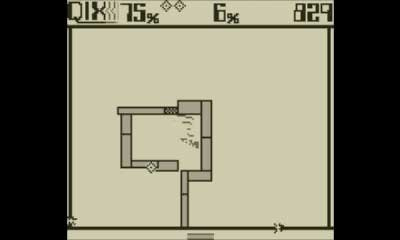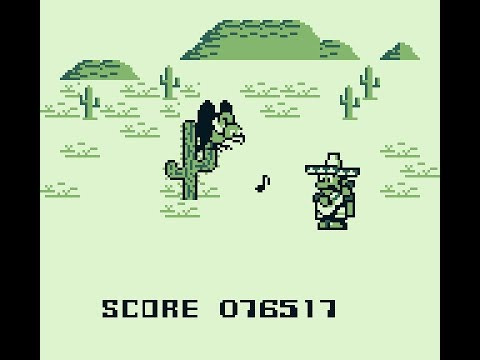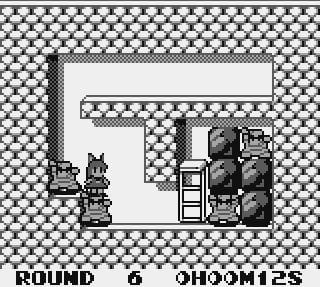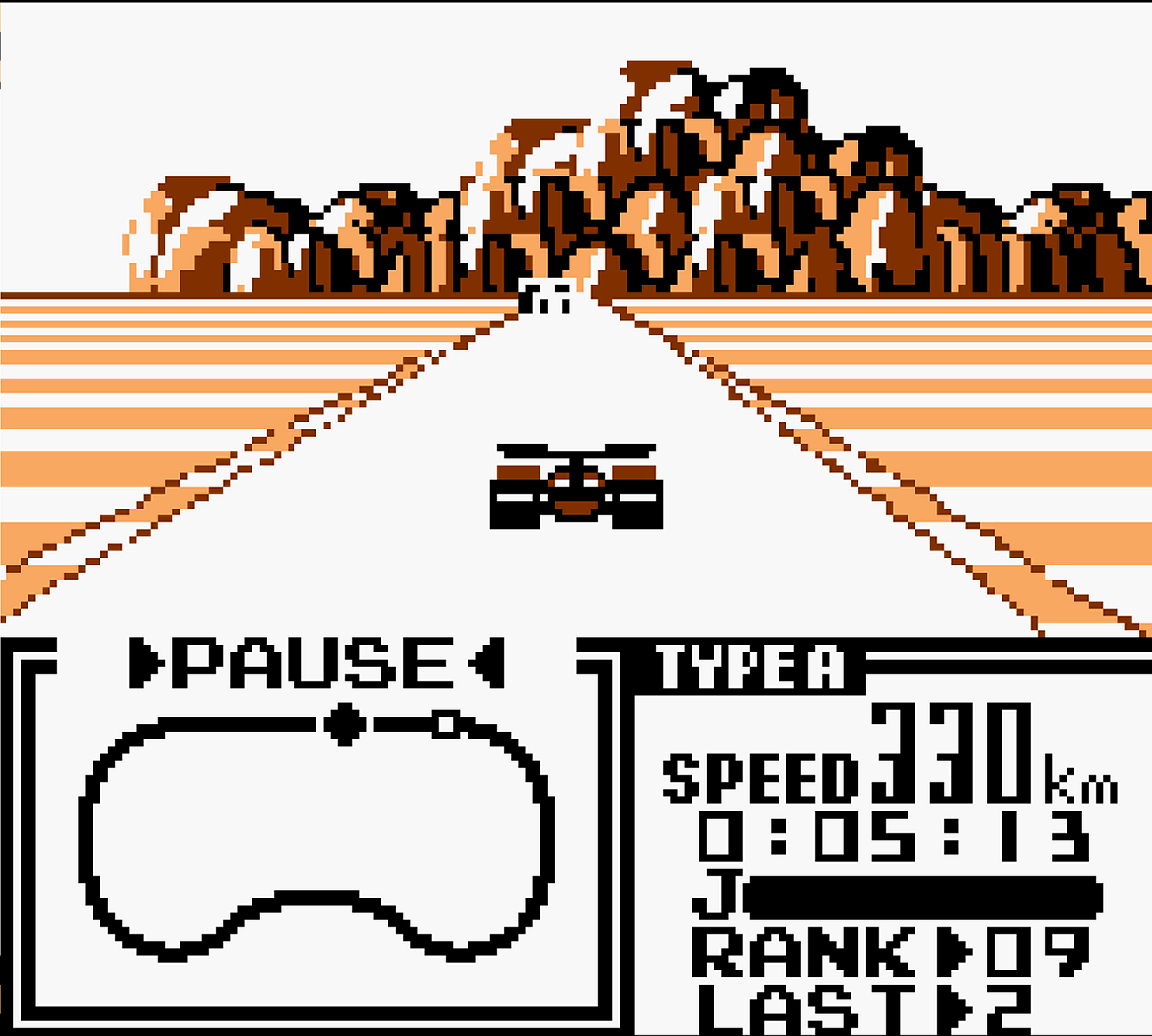It’s been a minute since the last edition of GAME BOY JOURNEY, though I assure you I have not been slacking on the playing of Game Boy games.
I experience these mostly in the fall on my beautiful backlit GBC, now in a shiny white case. I played them waiting in my parents’ living room, on the shoreline of the Sound smelling the sea air, on the Metro-North surrounded by commuters, myself a commuter.
1990 is a cool year for the Game Boy, most importantly because developers who weren’t Nintendo began to create great games. In particular, I liked CATRAP and AMAZING PENGUIN.
Anyways, here are my thoughts on some titles, and expect my 1991 one soon!
SOLARSTRIKER
DEVELOPED BY NINTENDO R&D1 AND MINAKUCHI ENGINEERING
RELEASED IN JANUARY 1990
Solarstriker is Nintendo's handheld shoot 'em up. It absolutely has the Nintendo control polish, and it looks *pretty* cool with the automatic GBC color palette, but the game itself is really a bit boring. The levels are a bit too long for the lack of enemy variety that is presented, and the power-up system isn't that interesting, especially compared to shooting games released around the same time, even handheld ones. It's a solid effort, but 1991 seems to be the year of GB space ship shooting games, as we'll later see.
QUARTH
DEVELOPED BY KONAMI
RELEASED IN MARCH 1990
I think Quarth sucks, and my analysis of why it sucks is not unique. It's easy to see where the developers were coming from. "Tetris is big, shooters are big, let's make a Tetris shooter!" The only issue is that it is either boring or impossibly difficult and it never manages to be fun.
QIX
DEVELOPED BY THRESHOLD RESEARCH, NINTENDO R&D1, AND MINAKUCHI ENGINEERING
RELEASED IN APRIL 1990
Qix, on the other hand, rules. It's a port of an American arcade game, and I don't believe this version is too different. It's an incredibly abstract game about claiming territory. There's a dangerous ephemeral electric thingy, the Qix, that bounces along this square playing field like an erratic Windows screensaver. Touching the Qix means game over. The goal is to conquer the playing field by drawing shapes composed of right angles, confining the Qix to an ever smaller pen. A level ends when a certain percentage of the board has been conquered (of course, like Achilles and the tortoise, we can't get to 100% by always taking only taking a portion of the whole). To make things a bit more complicated, other enemies travel the lines of the shapes the player has created. It's fun and quite challenging, and it's minimal graphics work very well on the Game Boy. Oh, it also has Mexican Mario?
GARGOYLE'S QUEST
DEVELOPED BY CAPCOM
RELEASED IN MAY 1990
I'm going to be honest here, this game is too tough for me. I can't really get past its first level. I know the Ghosts n' Goblins series (of which Gargoyle's Quest is a part) is known for this sort of player-hatred, and believe me, I respect it. Still, I have to admit that completing this game is not within my abilities. There's a lot to like here, however: a switch between a Dragon Quest-esque top-down view (with light RPG elements to go along with it), an interesting control scheme (being a Gargoyle, our protagonist can hover at a certain altitude, allowing for creative yet brutal level design), and nice, big sprites.
CATRAP
DEVELOPED BY ASK KODANSHA
RELEASED IN JUNE 1990
Catrap is a puzzle game about pushing blocks and smacking monsters, though the puzzles get their head-scratchiness from determining the correct order and route of block-pushing and monster-smacking. I think up to this point in the Game Boy's history, Catrap is its best game, at least from a modern perspective. Super Mario Land, Tetris, and The Final Fantasy Legend are all wonderful games, though I feel that their series and genres have moved in orthagonal directions since, and a modern player may bristle at some of their choices: SML's art and enemy design, Tetris' lack of the piece-holding mechanic, and The Final Fantasy Legend's arcane leveling systems. Catrap, though, doesn't have the burden of being a classic to get weighed down with comparisons, and the comparisons Catrap often warrants are much more modern touchstones. The obvious one is Braid -- both games include a time reversal mechanic. In Braid, this mechanic is integral to puzzles' solutions, but in Catrap it's only used to correct mistakes without having to restart the whole level.
But Catrap stands on its own as a enormous (100 levels!) puzzle box that throws the player tricky spatial problems based on simple movement and interaction rules. Those rules are, by the way, that
The level ends when all monsters have been smacked.
The player can only move left or right, and though they cannot jump, they can fall.
Some blocks can be pushed. These, too have gravity.
Some floors are destroyed when walked into. This causes blocks or monsters to fall.
Eventually, the player begins to control both the cat boy and the cat girl, switching with the SELECT button. This allows for more complicated solutions.
I'm a big fan of Catrap. I'd say it's one of my favorite puzzle games I've played! The game is especially wonderful for short periods of time that need killing, like sitting the train or the toilet, well, until you get particularly stumped. Though like with programming or design or most other cerebral activities, the best course of action is to put it down and think about something else. Sometimes the solution is obvious upon return.
AMAZING PENGUIN
DEVELOPED BY NATSUME
RELEASED IN AUGUST 1990
In an *amazing* one-two punch, Amazing Penguin proves to be another of the system's greatest by deftly linking fast-paced action and logical puzzle-game thinking. In Amazing Penguin, the player navigates a maze and conquers territory by removing nodes from the paths of the maze. There are enemies that run along the maze as well, causing a game over if they are run into. When an area is conquered, all enemies on the edges are destroyed. The nodes themselves come in two types: white ones, which reverse all enemies' direction upon removal, and black ones, which can be removed normally with no special effect, or by kicking them, destroying all enemies that it hits on its way off of the screen. The game's tempo is high, and the player must juggle their route through the maze with the positions and paths of their enemies, while making quick decisions on how to delete the nodes. It starts simple, but requires deep focus and fast reactions by the later levels.
It takes most of its inspiration from Pac-man, but is by no means a clone. Instead of copying Pac-man's mechanics, it borrows its the on-the-fly routing decisions, the constantly flipping power dynamic between the player and the enemies, and the thrill of rounding corners while being chased. It seems to take from Qix, too, with the two game sharing a goal of conquering territory through capturing discrete sections.
The game doesn't look like much, I'll admit. With the exception of a few cute backgrounds the player is rewarded with at the end of a level (and these are very cute), the game looks like wires upon a white (or green, I suppose) background. However, Amazing Penguin couldn't really get more complicated visually without cluttering its gameplay, so I believe its better for its minimalism.
Despite visual gripes, the game is really fantastic, which is unexpected -- the game is fairly obscure and its protagonist unassuming (why is he so amazing?). I'd call it a must-play in the original Game Boy library.
F1 RACE
DEVELOPED BY NINTENDO
RELEASED IN NOVEMBER 1990
The racing in F1 Race feels pretty good! It's kind of incredible they pulled of a raster racer on the Game Boy, and it's actually incredible that it controls well. It's pretty bare bones, however, and I'm not sure there's a lot of appeal to it now outside of history.
PAC MAN
DEVELOPED BY NAMCO
RELEASED IN NOVEMBER 1990
You really don't need to play this version of Pac-man. The reasons should be clear -- the color obscures the difference between the ghosts, the small screen yet high resolution forces parts of the maze to be off screen, and you can get an emulator on your cell phone.
It is true that this version of Pac-man has an option to view the whole screen, reducing the resolution of the sprites in order to be able to see the full board, but again, if you're itching for Pac-man on the go, you don't need to suffer this 1990 version anymore.




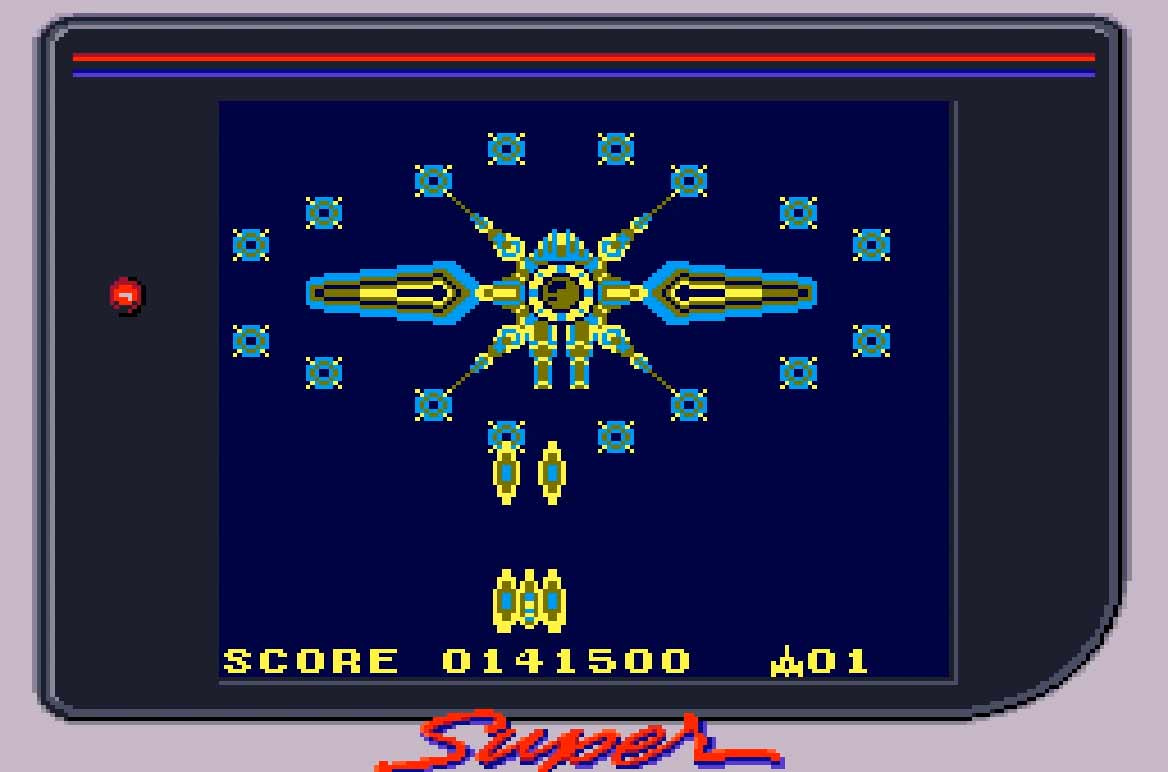
![Game Boy Longplay [116] Quarth - YouTube Game Boy Longplay [116] Quarth - YouTube](https://substackcdn.com/image/fetch/$s_!nWBJ!,w_1456,c_limit,f_auto,q_auto:good,fl_progressive:steep/https%3A%2F%2Fsubstack-post-media.s3.amazonaws.com%2Fpublic%2Fimages%2F4fef98f5-ec9f-4b95-b854-93a6a913dbea_480x360.jpeg)
